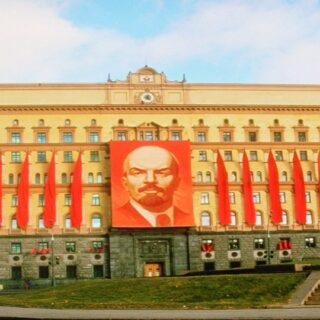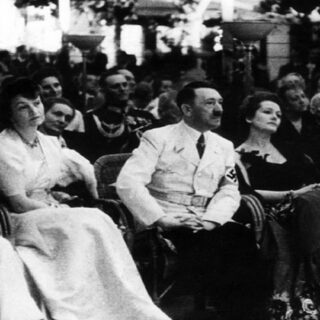
Tired of wishes,
Empty of dreams
— Carl Sandburg
The man who washes cars does not own one. The clerk who files cancelled checks at the bank has $2.02 in her own account. The woman who copy-edits medical textbooks has not been to a dentist in a decade. This is the forgotten America.
At the bottom of its working world, millions live in the shadow of prosperity, in the twilight between poverty and wellbeing. Whether you’re rich, poor, or middle-class, you encounter them every day.
They serve you Big Macs and help you find merchandise at Wal-Mart. They harvest your food, clean your offices, and sew your clothes. In a California factory, they package lights for your kids’ bikes. In a New Hampshire plant, they assemble books of wallpaper samples to help you redecorate. They are shaped by their invisible hardships. Some are climbing out of welfare, drug addiction, or homelessness. Others have been trapped for life in a perilous zone of low-wage work. Some of their children are malnourished. Some have been sexually abused. Some live in crumbling housing that contributes to their children’s asthma, which means days absent from school. Some of their youngsters do not even have the eyeglasses they need to see the chalkboard clearly.
While the United States has enjoyed unprecedented affluence, low-wage employees have been testing the American doctrine that hard work cures poverty. Some have found that work works. Others have learned that it doesn’t.
Moving in and out of jobs that demand much and pay little, many people tread just above the official poverty line, dangerously close to the edge of destitution. An inconvenience to an affluent family-minor car trouble, a brief illness, disrupted child care — is a crisis to them, for it can threaten their ability to stay employed. They spend everything and save nothing. They are always behind on their bills. They have minuscule bank accounts or none at all, and so pay more fees and higher interest rates than more secure Americans.
Even when the economy is robust, many wander through a borderland of struggle, never getting very far from where they started. When the economy weakens, they slip back toward the precipice. Millions have been pushed into a region of adversity by federal welfare reform’s time limits and work mandates.
Enacted in 1996 during an economic boom, the reform is credited by many welfare recipients for inducing them to travel beyond the stifling world of dependence into the active, challenging, hopeful culture of the workplace. They have gained self-confidence, some say, and have acquired new respect from their children. Those with luck or talent step onto career ladders toward better and better positions at higher and higher pay.
Many more, however, are stuck at such low wages that their living standards are unchanged. They still cannot save, cannot get decent health care, cannot move to better neighborhoods, and cannot send their children to schools that offer a promise for a successful future.
These are the forgotten Americans, who are noticed and counted as they leave welfare, but who disappear from the nation’s radar as they struggle in their working lives. Breaking away and moving a comfortable distance from poverty seems to require a perfect lineup of favorable conditions. A set of skills, a good starting wage, and a job with the likelihood of promotion are prerequisites. But so are clarity of purpose, courageous self-esteem, a lack of substantial debt, the freedom from illness or addiction, a functional family, a network of upstanding friends, and the right help from private or governmental agencies.
Any gap in that array is an entry point for trouble, because being poor means being unprotected. You might as well try playing quarterback with no helmet, no padding, no training, and no experience, behind a line of hundred-pound weaklings. With no cushion of money, no training in the ways of the wider world, and too little defense against the threats and temptations of decaying communities, a poor man or woman gets sacked again and again — buffeted and bruised and defeated. When an exception breaks this cycle of failure, it is called the fulfillment of the American Dream.
As a culture, the United States is not quite sure about the causes of poverty, and is therefore uncertain about the solutions. The American Myth still supposes that any individual from the humblest origins can climb to wellbeing.
We wish that to be true, and we delight in examples that make it seem so, whether fictional or real. The name of Horatio Alger, the nineteenth-century writer we no longer read, is embedded in our language as a synonym for the rise from rags to riches that his characters achieve through virtuous hard work. The classic immigrant story still stirs the American heart, despite the country’s longstanding aversion to the arrival of “the wretched refuse” at “the golden door,” in the words etched on the Statue of Liberty.
Even while resenting the influx of immigrants, we revel in the nobility of tireless labor and scrupulous thrift that can transform a destitute refugee into a successful entrepreneur. George W. Bush gave voice to the myth when he was asked whether he meant to send a message with the inclusion of two blacks, a Hispanic, and two women in the first senior appointments to his incoming administration. “You bet,” the president-elect replied: “that people who work hard and make the right decisions in life can achieve anything they want in America.”
The myth has its value. It sets a demanding standard, both for the nation and for every resident. The nation has to strive to make itself the fabled land of opportunity; the resident must strive to use that opportunity. The ideal has inspired a Civil Rights Movement, a War on Poverty, and a continuing search for ways to ease the distress that persists in the midst of plenty. But the American Myth also provides a means of laying blame.
In the Puritan legacy, hard work is not merely practical but also moral; its absence suggests an ethical lapse. A harsh logic dictates a hard judgment: If a person’s diligent work leads to prosperity, if work is a moral virtue, and if anyone in the society can attain prosperity through work, then the failure to do so is a fall from righteousness. The marketplace is the fair and final judge; a low wage is somehow the worker’s fault, for it simply reflects the low value of his labor.
In the American atmosphere, poverty has alwavs carried a whiff of sinfulness. Thus, when Judy Woodruff of CNN moder ated a debate among Republican presidential candidates in March 2000 she asked Alan Keyes why he thought morality was worsening when certain indicators of morality were improving: Crime was down, out-of-wedlock births were down, and welfare was down, she noted. Evidently, welfare was an index of immorality. There is an opposite extreme, the American Anti-Myth, which holds the society largely responsible for the individual’s poverty.
The hierarchy of racial discrimination and economic power creates a syndrome of impoverished communities with bad schools and closed options. The children of the poor are funneled into delinquency, drugs, or jobs with meager pay and little future. The individual is a victim of great forces beyond his control, including profit-hungry corporations that exploit his labor.
In 1962, Michael Harrington’s eloquent articulation of the Anti-Myth in his book The Other America heightened awareness; to a nation blinded by affluence at the time, the portrait of a vast “invisible land” of the poor came as a staggering revelation. It helped generate Lyndon B. Johnson’s War on Poverty. But Johnson’s war never truly mobilized the country, nor was it ever fought to victory. Forty years later, after all our economic achievements, the gap between rich and poor has only widened, with a median net worth of $833,600 among the top Io percent and just $7,900 for the bottom 20 percent.
Life expectancy in the United States is lower, and infant mortality higher, than in Japan, Hong Kong, Israel, Canada, and all the major nations of Western Europe. Yet after all that has been written, discussed, and left unresolved, it is harder to surprise and shock and outrage. So it is harder to generate action. In reality, people do not fit easily into myths or anti-myths, of course.
Each person’s life is the mixed product of bad choices and bad fortune, of roads not taken and roads cut off by the accident of birth or circumstance. It is difficult to find someone is not somehow related to his or her unwise behavior — to whose poverty is not somehow related to his or her unwise behavior.
How to define the individual’s role in her own poverty is a question that has shaped the debate about welfare and other social policies, but it can rarely be answered with certainty, even in a specific case. The poor have less control than the affluent over their private decisions, less insulation from the cold machinery of government, less agility to navigate around the pitfalls of a frenetic world driven by technology and competition. Their personal mistakes have larger consequences, and their personal achievements yield smaller returns. The interaction between the personal and the public is so intricate that for assistance such as job training to make a difference, for example, it has to be tailored to each individual’s needs, which include not only such “hard skills” as using a computer or running a lathe, but also “soft skills” such as interacting with peers, following orders willingly, and managing the deep anger that may have developed during years of adversity.
Job trainers are discovering that people who have repeatedly failed in school, in love, in work — cannot succeed until they learn that they are capable of success. To get out of poverty, they have to acquire dexterity with their emotions as well as their hands.





